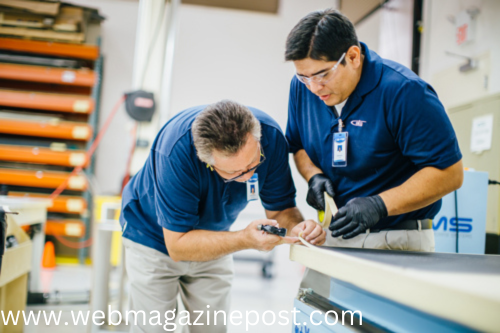
Aerospace Technologies Group: 100% Exploring the Latest Innovations Above the Clouds From Space Tourism to Supersonic Flight
Introduction to Aerospace Technologies
Aerospace technologies have always fascinated humankind, capturing our imaginations and pushing the boundaries of what is possible. From the first flight of the Wright brothers to the latest advancements in space exploration, the Aerospace Technologies Group (ATG) plays a pivotal role in transforming our dreams into reality. But what exactly does ATG do, and why is it so crucial in our modern world?
History of Aerospace Technologies
Early Developments in Aerospace
The journey of aerospace technologies began with mankind’s dream of flight. Early pioneers like the Wright brothers made groundbreaking strides in the early 20th century, laying the foundation for modern aerospace engineering. Their successful powered flight in 1903 marked the beginning of an era that would see rapid advancements in both aviation and space exploration.
Milestones in Aerospace Advancements
The following decades witnessed remarkable milestones, including the first commercial jet flights, the development of supersonic aircraft, and the historic Apollo moon landings. Each achievement not only demonstrated human ingenuity but also fueled further innovation and exploration.
Key Figures in Aerospace History
Visionaries such as Wernher von Braun, who played a crucial role in the development of rocket technology, and Amelia Earhart, who inspired countless aviators with her pioneering flights, have left an indelible mark on the field of aerospace. Their contributions continue to inspire current and future generations of aerospace engineers and enthusiasts.
Current State of Aerospace Technologies
Latest Innovations in Aerospace
Today, the aerospace industry is characterized by rapid technological advancements. Innovations such as electric aircraft, reusable rockets, and advanced satellite systems are revolutionizing the way we travel and communicate. Companies like SpaceX, Boeing, and Airbus are at the forefront of these developments, pushing the boundaries of what is possible.
Major Companies in the Aerospace Industry
The aerospace industry is dominated by a few key players, including Boeing, Airbus, Lockheed Martin, and SpaceX. These companies not only compete but also collaborate on various projects, driving innovation and ensuring the continuous evolution of aerospace technologies.
Impact of Aerospace Technologies on Everyday Life
From global positioning systems (GPS) to weather forecasting, aerospace technologies have become integral to our daily lives. They enable efficient air travel, enhance communication networks, and even contribute to environmental monitoring and disaster response.
Key Areas of Aerospace Technologies
Aircraft Design and Manufacturing
Aircraft design and manufacturing have seen significant advancements over the years. Modern aircraft are built using lightweight, durable materials and are equipped with engines that are more efficient and environmentally friendly.
Space Exploration Technologies
Space exploration has always been a core focus of aerospace technologies. Advances in spacecraft design, human spaceflight programs, and robotic missions have expanded our understanding of the universe and opened up new possibilities for exploration and colonization.
Satellite Communication Systems
Satellite technology has transformed global communications. From providing internet access in remote areas to enabling real-time broadcasting and navigation, satellites play a crucial role in our interconnected world.
Unmanned Aerial Vehicles (Drones)
Drones have revolutionized various sectors, including agriculture, surveillance, and delivery services. Their ability to access hard-to-reach areas and perform tasks autonomously makes them invaluable tools in modern society.
Aircraft Design and Manufacturing
Advances in Aircraft Materials
The use of advanced composite materials has significantly improved aircraft performance. These materials are lighter and stronger than traditional metals, leading to increased fuel efficiency and reduced emissions.
Modern Aircraft Engines
Modern aircraft engines are designed to be more efficient, producing less noise and lower emissions. Innovations such as geared turbofan engines and electric propulsion systems are setting new standards in aviation.
Aerodynamics and Fuel Efficiency
Aerodynamic improvements, such as winglets and blended wing body designs, have enhanced fuel efficiency and reduced the environmental impact of air travel. These advancements are critical as the industry strives for more sustainable aviation solutions.
Space Exploration Technologies
Spacecraft Design and Construction
The design and construction of spacecraft have evolved significantly. Today’s spacecraft are built to withstand the harsh conditions of space travel, with advanced materials and technologies ensuring their durability and performance.
Human Spaceflight Programs
Human spaceflight programs, such as NASA’s Artemis and SpaceX’s Crew Dragon, aim to return humans to the moon and eventually to Mars. These programs are paving the way for future exploration and potential colonization of other planets.
Robotic Space Missions
Robotic missions, like the Mars rovers and interplanetary probes, have provided invaluable data about our solar system. These missions are essential for understanding the environment and conditions on other planets, aiding future human exploration.
Satellite Communication Systems
Development of Communication Satellites
The development of communication satellites has revolutionized global communication. These satellites facilitate internet access, television broadcasting, and secure military communications, making them indispensable in today’s world.
Applications of Satellite Technologies
Satellite technologies have diverse applications, including weather monitoring, navigation, and remote sensing. They play a crucial role in disaster management, environmental monitoring, and scientific research.
Future Trends in Satellite Communications
Future trends in satellite communications include the deployment of mega-constellations, which aim to provide global internet coverage. These advancements will enhance connectivity, particularly in remote and underserved areas.
Unmanned Aerial Vehicles (Drones)
Evolution of Drone Technologies
Drone technology has evolved rapidly, with advancements in flight control, navigation, and payload capabilities. Modern drones are equipped with sophisticated sensors and autonomous systems, making them versatile tools for various applications.
Applications of Drones in Various Sectors
Drones are used in a wide range of sectors, including agriculture, construction, surveillance, and delivery services. Their ability to capture high-resolution images and perform tasks autonomously makes them invaluable in these industries.
Regulatory Challenges for Drones
The widespread use of drones has raised regulatory challenges, including privacy concerns and airspace management. Governments and regulatory bodies are working to establish guidelines to ensure the safe and responsible use of drone technologies.
Environmental Impact of Aerospace Technologies
Emission Reduction in Aviation
The aviation industry is committed to reducing emissions through the development of more efficient engines and the use of sustainable aviation fuels. These efforts are crucial in mitigating the environmental impact of air travel.
Sustainable Practices in Aerospace Manufacturing
Sustainable practices in aerospace manufacturing include the use of recyclable materials and energy-efficient production processes. These practices help reduce the environmental footprint of the aerospace industry.
Role of Aerospace Technologies in Climate Monitoring
Aerospace technologies play a vital role in climate monitoring. Satellites provide critical data on climate change, helping scientists understand and address environmental challenges.
Economic Impact of Aerospace Technologies
Job Creation in the Aerospace Sector
The aerospace industry is a significant source of employment, creating millions of jobs worldwide. These jobs range from engineering and manufacturing to research and development, contributing to economic growth.
Contribution to National and Global Economies
Aerospace technologies contribute to national and global economies through innovation, trade, and investment. The industry’s advancements drive economic development and technological progress.
Government Policies Supporting Aerospace Development
Governments play a crucial role in supporting aerospace development through funding, regulations, and international collaborations. These policies help foster innovation and ensure the industry’s growth and sustainability.
Future Trends in Aerospace Technologies
Emerging Technologies in Aerospace
Emerging technologies, such as hypersonic travel, quantum computing, and advanced propulsion systems, are set to revolutionize aerospace. These innovations promise to make air and space travel faster, safer, and more efficient.
Predictions for the Next Decade
The next decade will likely see significant advancements in autonomous flight, space tourism, and interplanetary exploration. These developments will open up new possibilities and reshape the aerospace landscape.
Challenges and Opportunities Ahead
The aerospace industry faces challenges, including regulatory hurdles, environmental concerns, and the need for sustainable practices. However, these challenges also bring opportunities for innovation and expansion.
Innovations Driving Aerospace Technologies
Artificial Intelligence and Aerospace
Artificial intelligence (AI) is transforming aerospace, enhancing everything from aircraft design to air traffic management. AI algorithms improve efficiency, safety, and decision-making processes in the industry.
Advanced Materials and Nanotechnology
Advanced materials, such as carbon composites and nanomaterials, are driving innovation in aerospace. These materials offer superior strength, durability, and weight savings, enhancing the performance of aircraft and spacecraft.
Propulsion Systems and Hypersonic Travel
Innovations in propulsion systems, including electric and hybrid engines, are paving the way for more sustainable aviation. Hypersonic travel, which promises to drastically reduce travel times, is also on the horizon, representing the next frontier in aerospace technology.
Collaborations and Partnerships in Aerospace
International Space Agencies and Private Companies
Collaborations between international space agencies, such as NASA and ESA, and private companies, like SpaceX and Blue Origin, are accelerating space exploration and technological advancements.
Public-Private Partnerships in Aerospace
Public-private partnerships are crucial in driving innovation and funding large-scale aerospace projects. These collaborations leverage the strengths of both sectors to achieve common goals.
Academic and Research Institutions’ Role
Academic and research institutions play a vital role in aerospace innovation. They conduct cutting-edge research, train future aerospace professionals, and collaborate with industry leaders to develop new technologies.
Education and Careers in Aerospace
Educational Pathways for Aerospace Careers
Aerospace careers require specialized education, typically in engineering, physics, or related fields. Universities offer various programs and degrees tailored to the aerospace industry, providing the necessary skills and knowledge.
Key Skills for Aerospace Professionals
Key skills for aerospace professionals include problem-solving, analytical thinking, and proficiency in advanced technologies. Hands-on experience and continuous learning are also essential in this rapidly evolving field.
Future Job Prospects in Aerospace Technologies
The future job prospects in aerospace are promising, with increasing demand for skilled professionals in areas like AI, robotics, and sustainable engineering. The industry’s growth offers numerous opportunities for aspiring aerospace engineers and scientists.
Conclusion
Aerospace technologies continue to shape our world, driving innovation and exploration. From the early days of flight to the cutting-edge advancements of today, the Aerospace Technologies Group is at the forefront of these developments. As we look to the future, the possibilities are limitless, with new technologies and collaborations paving the way for even greater achievements.
FAQs
What are the most significant advancements in aerospace technologies?
Significant advancements include reusable rockets, electric aircraft, hypersonic travel, and AI integration in aerospace systems.
How do aerospace technologies impact our daily lives?
Aerospace technologies impact daily life through GPS navigation, satellite communications, weather forecasting, and efficient air travel.
What are the challenges facing the aerospace industry today?
Challenges include regulatory hurdles, environmental concerns, and the need for sustainable practices.
How can someone start a career in aerospace technologies?
Starting a career in aerospace typically involves pursuing a degree in aerospace engineering or related fields and gaining hands-on experience through internships or research projects.
What role do government policies play in the development of aerospace technologies?
Government policies provide funding, establish regulations, and foster international collaborations, which are essential for the growth and innovation of the aerospace industry.


